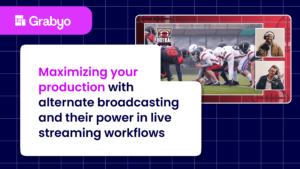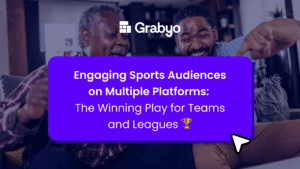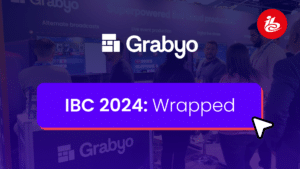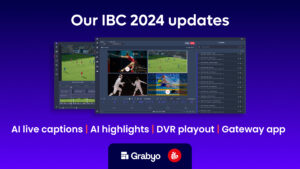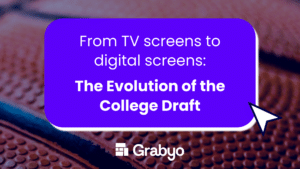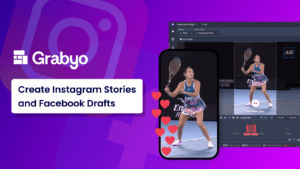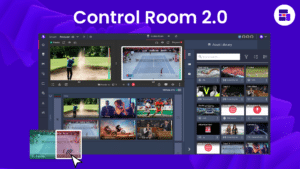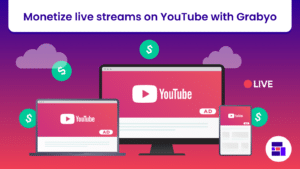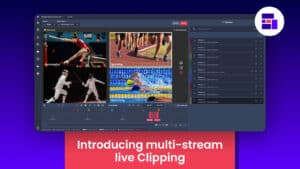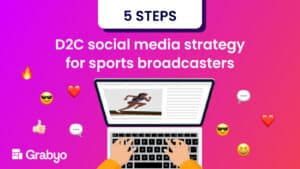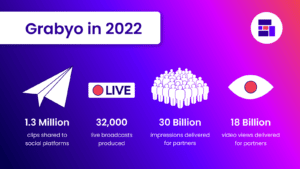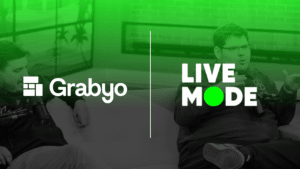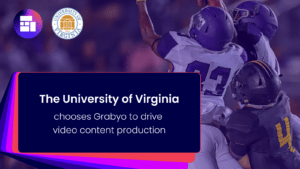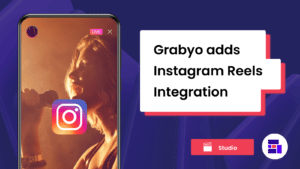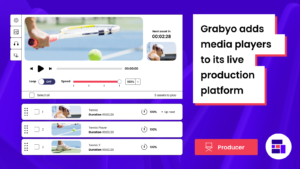
Reflecting on 2024: key trends reshaping live broadcast and production…and what’s to come!
As we close out another transformative year in live broadcasting and production, we’re taking a look back at some of 2024’s most exciting trends and developments—highlighting digital-first shifts, creator-led fan engagement, and new financial landscapes.
From Gerard Piqué’s Kings League capturing the attention of younger audiences, to the NBA’s dynamic creator partnerships, and game-changing NCAA NIL updates, the industry continues to innovate at the intersection of media, fan engagement, and digital monetization.
1. The rise of digital-first competitions: Kings League success
One standout trend has been the rise of digital-first competitions. Since its inception, Gerard Piqué’s Kings League has redefined fan engagement, blending live football with gaming-inspired rules that appeal to younger audiences. Positioned as a digital-first competition, Kings League was crafted for audiences under 34 years old, with more than 85% of its fanbase falling into this demographic.
The Kings League’s approach of streaming live on platforms like Twitch, YouTube, and TikTok—rather than relying on traditional broadcast channels—has been crucial to this success. Piqué himself describes it as a blend of traditional football and video games, allowing fans to interact with and even alter game rules, keeping engagement high. Additionally, familiar faces like Ronaldinho, Neymar, and Sergio Aguero either own teams or have appeared on the pitch, adding star power that draws both new and loyal fans.
Profitable from day one, the Kings League pulls in the bulk of its revenue from high-profile sponsors like Adidas and Spotify, as well as ticketing and merchandise sales from its sold-out stadium events. With expansions planned for 2025, including new leagues in Italy and Brazil, Kings League exemplifies how digital-first strategies and fan-centric innovations are reshaping sports media. In fact, we’re even seeing similar competitions like Mats Hummels’ and Lukas Podolski’s Baller’s League set to expand into the UK and USA.
“For us, it’s really important right now to really invest in the IP and be on as many devices and TVs as possible so we can have as much reach as possible.
By being on Twitch, YouTube or TikTok, which is free-to-air, it’s perfect for us to reach that audience. If we can arrive to different deals with traditional platforms in order to do something that’s not exclusive for them, because we have to keep part of this streaming, for us it’s fine and another way of reaching more people.
But right now we are not trying to find a big cheque to get some money in order to sell our rights to different kinds of platforms. For us, our main focus, at least for these first years, is to invest in the IP and really try to become global.”
⚽️ Gerard Pique speaking to SportsPro Magazine on the success of The King’s League
2. NBA’s expanded creator initiatives: content for every fan
In 2024, the NBA took a significant step in expanding its Creator Cup Series, amplifying its reach with a broader range of creators across sports, fashion, and even culinary arts. The initiative uses influencers to bring exclusive, behind-the-scenes content to fans, connecting with audiences in new ways that resonate with today’s digital natives.
The Creator Cup Series now includes marquee events like the NBA All-Star Game and Summer League, drawing top creators such as Kai Cenat and Drew Afualo, and inviting fans to see the NBA experience from a different perspective. The series aims to capture younger fans through courtside correspondents like Joy DeAngela and YPK Raye, whose coverage across NBA social channels brought in over 650 million views last season alone.
By leaning into influencer-led initiatives, the NBA is bridging sports and lifestyle content, appealing to diverse interests and giving fans more personal access to the game they love. For sports leagues and brands, these initiatives underscore the value of reaching audiences across multiple touchpoints, offering not just live broadcasts, but interactive, community-focused experiences.
3. The evolution of alt-casting: re-imagining sports broadcasts
The Creator Series typifies the way sports broadcasts are undergoing a transformation, driven by innovative alternate viewing experiences that blend traditional gameplay with entertainment, data visualization, and interactivity. Two standout examples in 2024 highlight this evolution: the NFL’s Funday Football alt-cast returning for a second year, and NESN’s expanded alt-cast offerings for the Boston Bruins coverage back in October.
On December 9, 2024, Sony’s Beyond Sports technology will power an unprecedented altcast of a Monday Night Football game between the Cincinnati Bengals and Dallas Cowboys. Combining real-time NFL data with animated storytelling, this broadcast integrates beloved characters from The Simpsons into the game. Homer, Bart, and the rest of the family take on roles like sideline commentators and virtual reporters, creating an engaging viewing experience across Disney+, ESPN+, and NFL+.
Alt-casting in action!
Funday Football returns this December in the NFL, bringing its innovative broadcast to life once again! Designed to captivate both new and loyal fans—including multi-generational audiences—it promises an exciting and entertaining experience. Dive into the full feature in SVG‘s article below.
This initiative builds on the success of the Emmy-winning NFL Toy Story Funday Football altcast, proving that animated sports presentations resonate with multigenerational audiences. By using real-time visualization tools, the altcast blends live-action sports with interactive storytelling, allowing fans to enjoy replays, dynamic angles, and even virtual commentators. The creative effort reflects a broader strategy to attract younger viewers while retaining traditional fans.
NESN, the home of the Boston Bruins, is also redefining sports viewing. This season, NESN introduced Unobstructed Views, an alternate broadcast format featuring former Bruins goaltenders Tuukka Rask and Andrew Raycroft as co-hosts, providing fans with an intimate, conversational experience during select games. Meanwhile, NESN MultiView offers a dynamic, multi-angle viewing option for Bruins fans, combining immersive perspectives with expert commentary.
NESN’s strategic use of digital platforms like YouTube, Facebook, and Twitch repurposes its traditional broadcast, ensuring access to diverse audiences. Features like live statistics overlays and 4K HDR broadcasts further enhance the viewing experience, marrying innovation with top-tier production quality.
The rise of alt-casts demonstrates the industry’s commitment to reaching diverse demographics through tailored content. These innovative broadcasts are not just about entertainment—they represent a strategic shift toward audience-first programming.

F1 Kids returns: bringing F1 to life for the next generation
F1 Kids was back for a second season in 2024, offering a unique way for young fans to experience the excitement of Formula 1. Starting with the Saudi Arabian Grand Prix, the live international feed covered seven races, featuring child-friendly commentary, 3D augmented graphics, and engaging animations. Designed to make the sport more accessible and fun, this innovative broadcast continues to evolve, bringing the action to life for a new generation of fans around the world.
4. The Future of NCAA Sports: NIL rule changes and what’s ahead in 2025
A seismic shift is coming to college sports in 2025 with significant updates to NIL (Name, Image, and Likeness) rules. Following legal cases addressing athletes’ rights, the NCAA has made landmark changes that will allow student-athletes to earn a portion of their school’s revenue and open the door to more expansive scholarship opportunities.
The updated NIL rules include back payments to athletes dating back to 2016 and allow players to earn up to 22% of their school’s annual revenue, potentially adding millions to the college sports ecosystem. Roster limits will also be expanded, particularly for high-revenue sports like football and basketball, while schools will have more flexibility in distributing scholarships.
For student-athletes, these changes represent a new era of opportunity, particularly for those entering college in 2025 or later. For schools, this shift also means more competition in recruitment and the need to offer robust NIL programs to attract top talent.
Schools, especially those in the Power Five conferences, will likely need to prioritize revenue sports to manage the demands of NIL compliance, while balancing gender equality considerations under Title IX. As the NCAA prepares for these adjustments, the entire college sports ecosystem is bracing for a dynamic, athlete-focused future.
5. AI: Enhancing, not disrupting, the fan experience
Short-form content may be especially popular with younger audiences, but it’s becoming a priority for fans of all ages. As expectations for seamless digital engagement across multiple platforms grow, broadcasters and rights holders face mounting pressure to deliver rapid, engaging content or risk falling behind. In this context, the integration of AI into sports broadcasting workflows has emerged as a transformative solution.
Far from being a disruptor, AI is reshaping how fans engage with their favorite games while empowering organizations to enhance their storytelling. AI-powered clipping has revolutionized the production of highlights and reels, turning what was once a time-intensive process into a near-instantaneous one across various formats. This evolution not only satisfies the demand for immediacy but also enhances accessibility and engagement, adding significant value to digital content. By automating live clipping and giving the ability to curate real-time content, AI enables creative teams to focus on what they do best – crafting compelling, innovative narratives, without missing any moment.
Broadcasters like Wimbledon and LaLiga are using AI tools to identify, tag, and distribute key moments from live events on digital platforms, appealing to fans who prefer short, dynamic content over extended broadcasts. As ESPN Chairman Jimmy Pitaro notes, “AI’s potential lies in enhancing, not upending, the sports experience,” helping the industry adapt to evolving viewer expectations without losing its traditional appeal.
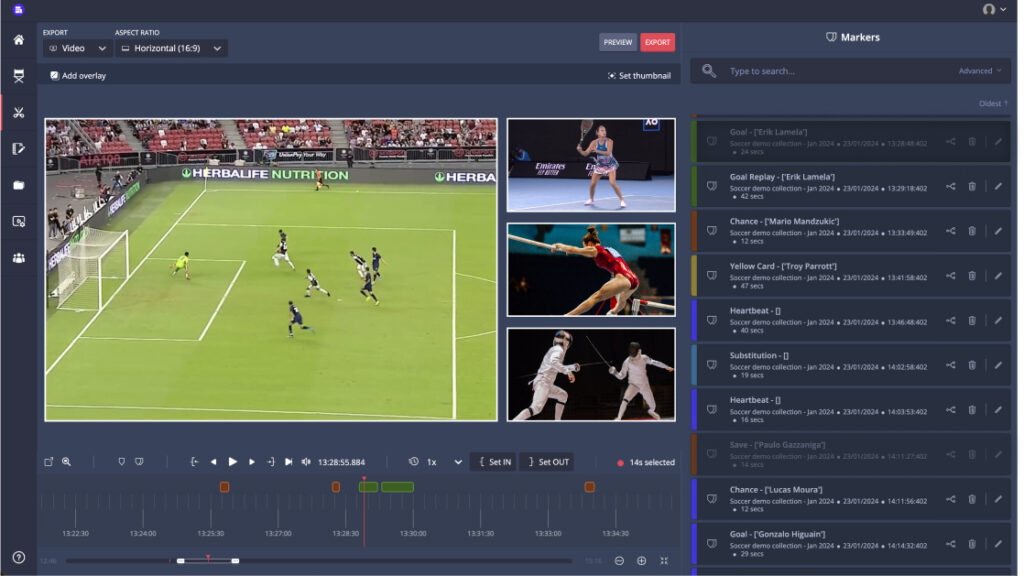
More than just a tool for efficiency, AI enhances human creativity
For resource-constrained teams, AI levels the playing field by enabling the production of high-quality highlights and broadcasts that were once unattainable. AI-driven cameras and automated tools allow for the coverage of more events with smaller crews, maintaining cost efficiency without sacrificing quality. This also opens up new opportunities to monetize content, extending its reach and value.
More than just a tool for efficiency, AI enhances human creativity by automating repetitive tasks and freeing teams to focus on crafting innovative, compelling stories.
Final thoughts: building on 2024’s momentum in sports media
As we look to 2025, these trends signal a continued shift towards audience-first approaches, driven by digital innovation, creative partnerships, and athlete empowerment. From Kings League’s gamified experience to the NBA’s influencer-driven fan engagement, sports media is no longer about static broadcasts; it’s about immersive, interactive, and tailored experiences that meet fans where they are.
For brands, platforms, and rights holders, staying agile and embracing these shifts will be essential to capturing the next generation of sports fans. As digital platforms, influencer partnerships, and NIL opportunities continue to expand, the sports media landscape in 2025 promises to be more connected, innovative, and fan-focused than ever before.
Take a look at our related blogs:
Stay in touch
Join over 20,000 broadcast and media professionals and receive updates from us direct to your inbox!


